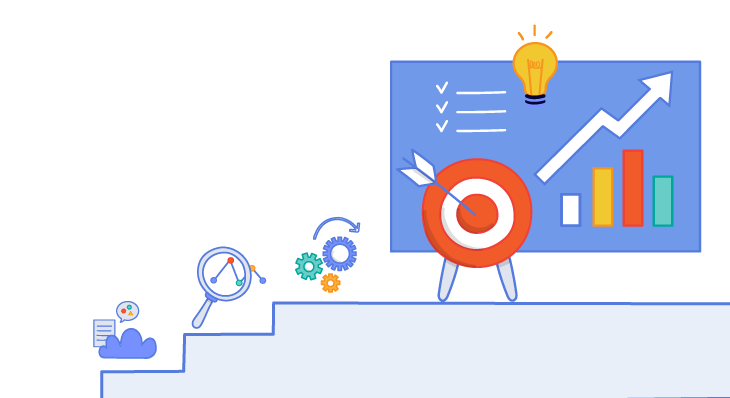Self-Service analytics is all the rage these days; IT departments don't want to be the permanent “BI Department,” and users don't want to be waiting on someone else for their data insights. The natural conclusion is that people want to have self-service capabilities to understand what's going on in their data. This type of self-service is what we mean when we say ad-hoc data discovery. We're not necessarily building reports or dashboards but instead just exploring, manipulating, grouping, filtering, and generally making calculations to help look for a particular insight as we need it.
Since it's reasonably apparent why users would want to take their data discovery capabilities into their own hands, you should be aware of the potential roadblocks to a successful implementation - they exist, and they are serious. The following are some common issues and some thoughts on avoiding these situations.
Users Lack the Tools to Perform Data Discovery
Today, most companies overuse Microsoft Excel for everything, and data exploration activities are no exception. Excel has a powerful capability to pull data from databases, enabling users to use tools like the pivot table and basic charting to let them seek their own conclusions without the need for IT. One of the most significant issues here is that Excel wasn't primarily designed with this capability in mind and lacks a lot of functionality that a tool intended for ad-hoc data exploration would have. A complete business intelligence tool will give your users significant benefits over Excel when deploying self-service capabilities:
- Security
- More Visualization Capabilities
- Embeddability
- Collaboration
- Cloud Integration
- Interactive / Drill Down / Drill Through
- Data Structure
- Data Governance
- Data Preparation
- Realistically, all things data!
Data is a Problem
If you've read the last four bullet points from above, you'll see that data, in general, is an issue when delivering data discovery to your users. It's not practical to point non-technical users at a database and say, “everything you need is in there, have fun - don't call me.”
Databases can be full of issues which get compounded when you want to enable self-service:
- Poor Structure can make it difficult and sometimes impossible for users to find what they need without the help of someone well-versed in the data.
- Poor Database Performance can make it frustrating or impossible to generate a specific query to get the data they need. It's not uncommon to have performance so bad that an application 'gives up' before the data even finishes running.
- Data Accuracy process changes and staffing changes over the years can lead to differences in how data gets stored over time. These changes can make it impossible to do any meaningful reporting without some serious data cleaning.
Modern Business Intelligence (BI) tools will have Data Preparation and ETL tools integrated in one platform to help solve these problems and present users with governed data that is clean, easy to use and certified. These tools can mean the difference between a successful ad-hoc data discovery implementation and a complete waste of time and money.
Everyone Creating their Own Content
If there is one thing that BI managers fear, it's the wild west where users are all creating independent reports with questionable accuracy and making decisions based on these reports. Sadly, the rampant use of Excel is one of the most significant contributors to this chaos.
A modern BI tool should contain ad-hoc data discovery capabilities and the ability to share and collaborate with other users. As a team, you should use BI to build a repository of data-backed information for others to use, improve upon and collectively create a culture of data-informed decision making.
User Education
A common issue with many business intelligence tools is that they can expect a high degree of baseline knowledge before a user can perform any analysis. BI Software shouldn't be so tricky that it forces business users to become data engineers, nor should they be offered so few capabilities that the software is useless to them. There needs to be a configurable experience based on the expectations and capabilities of the users - one size fits all doesn't work well for everyone.
License Costs Add Up
When choosing a self-service tool for the masses, you need to ensure that your potential provider is not pushing a seat-based licensing model. Otherwise, your costs will quickly reach the Exosphere (The atmosphere of Earth goes Troposphere, Stratosphere, Mesosphere, Thermosphere, then Exosphere!!!). You want to find a vendor that offers an unlimited company-wide model or, at a minimum, a shared license model; otherwise, you're paying substantial subscription prices for everyone in the company.
Want to Learn More?
As you can see, there are many features within a BI tool that, when implemented correctly, can significantly help you successfully deliver Ad-Hoc Data Discovery. One of the biggest hurdles that I mentioned was data, and having a robust data layer will help solve many of these issues. Our videos '3 Data Storage Techniques in Dundas BI' and 'Why You Need to Pair Data Governance with Self-Service' are great places to learn more. If you're looking to deliver a more effortless experience for less technical users than full-blown ad-hoc capabilities, consider watching '3 Easy Analytical Capabilities Your Users Are Missing Out On.' Cheers.
About the Author

Jeff Hainsworth is a Senior Solutions Architect at Dundas Data Visualization with over a decade and a half of experience in Business Intelligence. He has a passion for building, coding and everything visual – you know, shiny things! Check out "Off the Charts... with Jeff", his platform for great content on all things analytics, data visualizations, dashboards, and business intelligence. There’s something for everyone!
